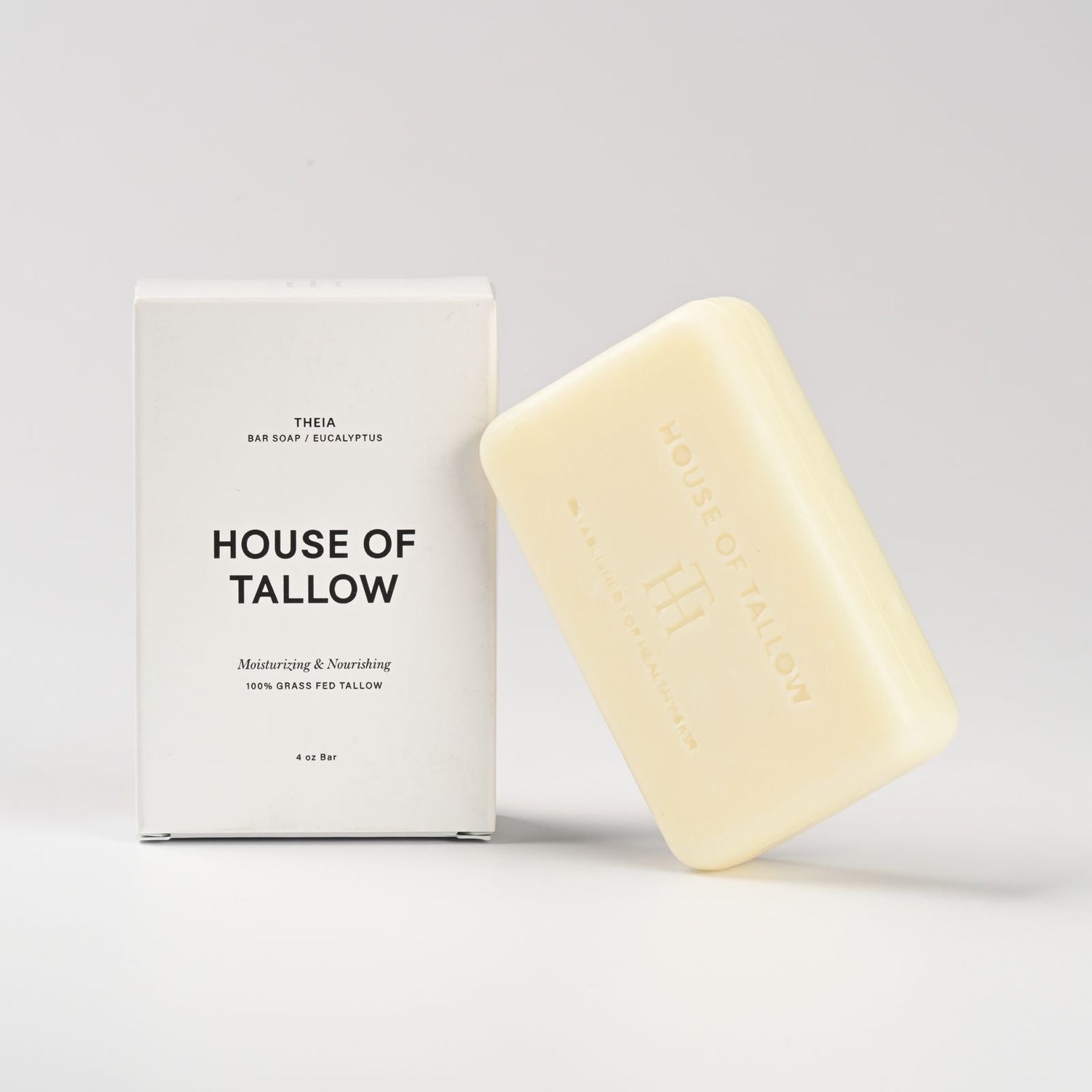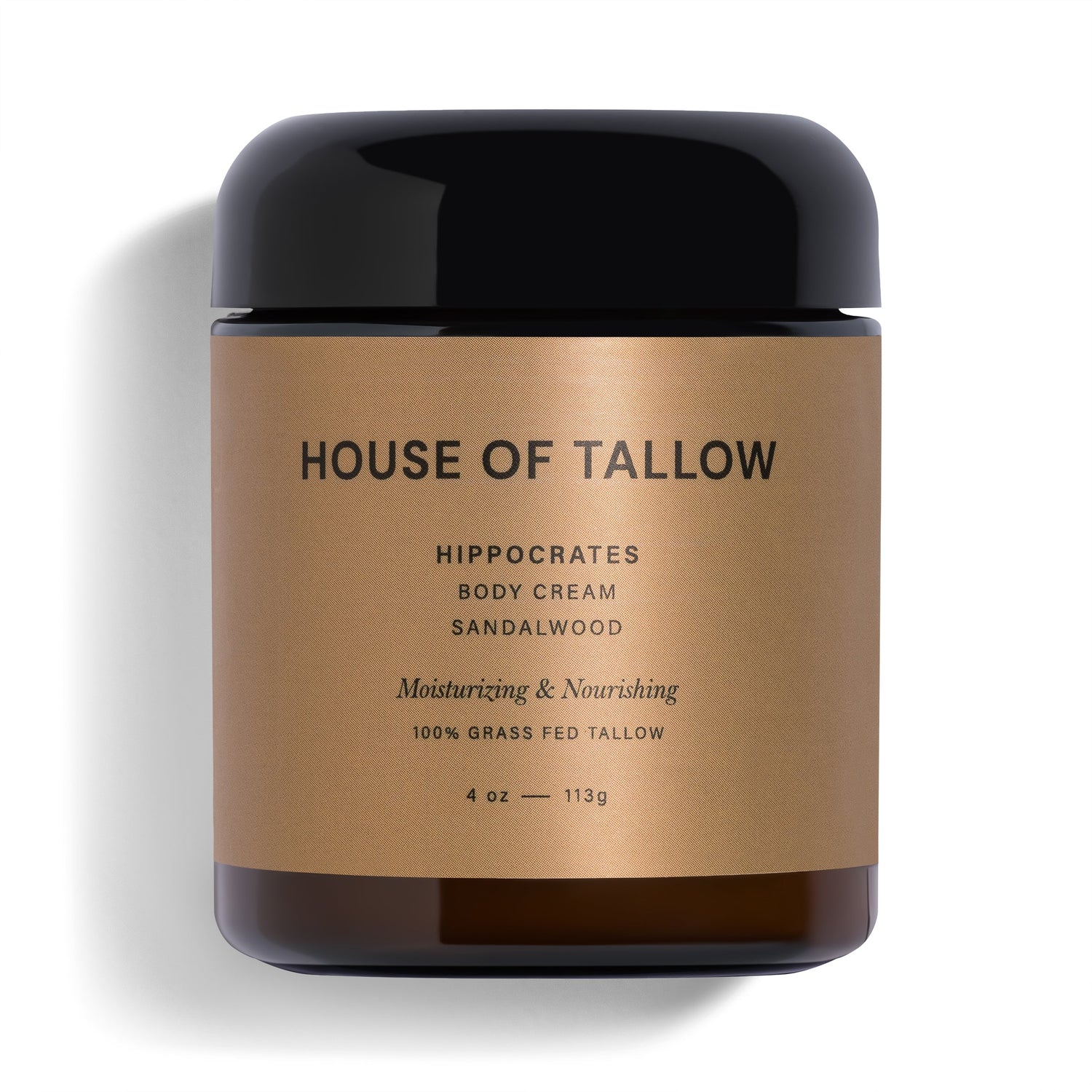Tallow balms are naturally long-lasting without synthetic preservatives. Here's why:
- Stable Composition: Tallow contains 50% saturated fats, making it resistant to oxidation and spoilage.
- Natural Antioxidants: Vitamins A, D, E, K, and coenzyme Q10 in tallow help slow down degradation.
- Essential Oils: Ingredients like tea tree and rosemary extract add antimicrobial and preservative effects.
- Proper Storage: Airtight, UV-blocking containers and cool, dry storage extend shelf life to 12-18 months.
With these natural qualities and careful production methods, tallow balms offer a chemical-free solution for skincare preservation.
How Tallow Stays Fresh Naturally
Saturated Fats Prevent Spoilage
Tallow's ability to stay fresh largely comes from its high saturated fat content, which acts as a natural shield against spoilage. With about 50% saturated fat[1], tallow resists oxidation far better than many other fats.
In fact, studies show that tallow oxidizes 10 times slower than soybean oil when exposed to the same conditions[3]. This is thanks to its unique fatty acid profile:
| Fatty Acid Type | Tallow Content | Plant Oil Average | Effect on Stability |
|---|---|---|---|
| Saturated | 50% | 14-16% | Strong resistance to oxidation |
| Monounsaturated | 42% | 23-30% | Moderate stability |
| Polyunsaturated | 4% | 50-70% | Easily oxidized |
Natural Antioxidants in Tallow
Tallow also contains natural antioxidants that work together to slow down oxidation:
"Studies have shown that the natural antioxidants in tallow can reduce lipid oxidation rates by up to 30% in controlled conditions, significantly extending product shelf life without artificial preservatives[7]."
These antioxidants include:
- Vitamin E (tocopherols): A key player in fighting free radicals
- Beta-carotene: Offers extra protection against oxidation
- Coenzyme Q10: Helps guard against lipid damage[6]
Temperature is another factor in tallow's stability. Its high melting point (110-115°F) not only limits oxidation but also naturally discourages microbial growth[8][9].
House of Tallow ensures that 95% of tallow's antioxidants are retained through careful, low-temperature processing.
Natural Ingredients That Extend Shelf Life
Preservative Effects of Essential Oils
Tallow-based skincare products often incorporate essential oils to improve preservation. Oils like tea tree, eucalyptus, cinnamon, and clove are known for their ability to act as natural preservatives[5].
These oils work due to their unique properties:
| Essential Oil | Key Properties |
|---|---|
| Tea Tree | Antimicrobial, anti-inflammatory |
| Cinnamon | Antifungal, antibacterial |
| Eucalyptus | Antimicrobial, cooling |
"Essential oils target harmful microbes while preserving skin flora balance[5]."
Plant Extracts as Stabilizers
Botanical extracts complement tallow's vitamins by adding stability through antioxidants. Rosemary extract is particularly effective, often used in combination with other natural preservatives for balanced results[11].
House of Tallow relies on cold-pressed essential oils and CO2-extracted rosemary to enhance preservation. This method strengthens tallow’s natural ability to stay fresh while ensuring the product remains effective and safe.
Making and Storing Tallow Balms
Temperature Control in Production
Maintaining the right temperature during production is key to keeping tallow's nutrients and antioxidants intact. The ideal melting range is 110°F to 120°F (43°C to 49°C)[4], which protects heat-sensitive vitamins like A, D, E, and K.
Cooling quickly to 60-65°F (15-18°C) ensures a smooth, stable texture by preventing large crystal formation[3]. This process not only locks in the active ingredients but also helps extend the shelf life of the balm.
| Production Stage | Temperature Range | Purpose |
|---|---|---|
| Melting | 110-120°F (43-49°C) | Protect nutrients |
| Initial Cooling | 60-65°F (15-18°C) | Ensure smooth texture |
Following these steps results in a stable base that stays effective with proper storage.
Proper Storage Methods
To prevent oxidation, use air-tight packaging. The best options include:
- Amber or cobalt glass jars: Block UV rays that can degrade antioxidants[5].
- Airless pump containers: Limit exposure to air and reduce oxidation[6].
- Aluminum tins: Offer protection from light.
Store tallow balms in a cool, dark place, ideally between 60-75°F (15-24°C). Avoid humid areas, like bathrooms, to prevent microbial growth. With proper storage, these balms typically last 6-12 months and can even stay effective for up to 18 months under optimal conditions[2][12].
This method keeps the balm fresh without the need for synthetic additives.
Tips for Clean Product Use
Using clean practices while applying tallow balms helps maintain their quality:
- Apply with clean wooden spatulas or dry hands.
- Always seal containers tightly and keep them dry.
- Store away from direct sunlight and heat sources.
- Use smaller containers for frequent access to avoid contamination.
Opt for glass containers over plastic to avoid potential chemical leaching. These simple steps ensure your balm stays fresh and effective longer.
sbb-itb-a1b9fc0
DIY Whipped Tallow Balm | Anti-Aging | Dry Skin | Natural Skincare
House of Tallow's Production Methods

House of Tallow follows time-tested preservation techniques to craft balms that last.
Grass-Fed Tallow: The Foundation
The company starts with grass-fed tallow sourced from regenerative farms, ensuring a high-quality base. Each batch undergoes rigorous testing for purity and nutrient content, providing a material that naturally resists oxidation and spoilage[4].
Gentle, Low-Temperature Rendering
By using a low-temperature rendering process, House of Tallow retains the natural preservative qualities of tallow. Their small-batch production ensures close monitoring, keeping every step precise and controlled[4].
Thoughtful Packaging and Ingredients
House of Tallow packages its products in amber glass containers with metal lids, shielding them from light and oxidation. This plastic-free choice avoids chemical contamination and keeps the product stable over time[4].
To further support product longevity, they incorporate organic essential oils and herbs known for their antimicrobial properties. By combining high-quality ingredients with careful methods, they maintain freshness without relying on synthetic additives. This blend of traditional practices and modern quality control highlights their commitment to natural preservation.
Conclusion: Advantages of Natural Preservation
Key Takeaways
When combined with other natural ingredients, tallow offers a way to create skincare products that work well with skin biology while avoiding synthetic chemicals. Its melting point of 95 degrees Fahrenheit [10] and natural resistance to oxidation make it an effective base for chemical-free preservation. Here's why it works:
- Built-in preservation: Saturated fats in tallow naturally resist oxidation, while antioxidants help prevent degradation.
- Nutrient retention: Preserves skin-friendly vitamins like A, D, E, and K [10].
This makes tallow-based products a gentle option for sensitive skin, eliminating the need for synthetic additives.
Tips for Smarter Skincare Choices
Studies show that tallow balms preserved with essential oils perform just as well as those with synthetic preservatives [5]. To keep your skincare products at their best:
- Use clean tools for application.
- Always reseal containers after use.
- Store in a cool, dark spot to extend shelf life.
FAQs
Here are answers to common questions about tallow balm, focusing on its storage and shelf life:
How long does tallow balm last?
When stored correctly at room temperature, tallow balm can last up to 12 months [8]. Its durability comes from the saturated fats and antioxidants present in its composition [1][4].
Signs it might be time to toss it include:
- A rancid smell
- Changes in texture
- Discoloration
- Mold
- Decreased effectiveness
What is the shelf life of tallow balm?
The shelf life is generally around 12 months when stored under the right conditions [8]. Grass-fed tallow, rich in vitamins A, D, and E, stays stable longer if kept below 76°F (24°C) in airtight, light-blocking containers [13]. Proper storage plays a big role in maintaining its quality.




